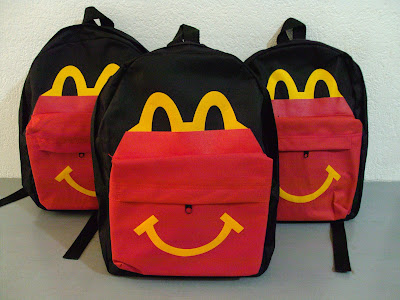As the World Bicycle Day is Celebrated: EcoWaste Coalition Bares Lead Paint Hazard in Some Children’s Bicycles
A toxics watchdog
group has rung the alarm bell to warn consumers, especially parents and their
young ones, to be careful in choosing bicycles as some products may be coated
with lead paint, a major source of lead poisoning in children.
Coinciding with the observance of the World Bicycle Day on June 3 as declared
by the UN General Assembly in 2018, the EcoWaste Coalition has released the
results of its latest investigation on lead paint hazard targeting bicycles
marketed for young children 1.5 to 6 years old.
“Biking is a fun and healthy exercise for kids that can help in their physical
fitness and development,” said Thony Dizon, Chemical Safety Campaigner,
EcoWaste Coalition. “Our discovery of health-damaging lead paint in some
bicycles is very concerning as children can be exposed to lead if they pick up
and eat flaking paint chips from a lead coated bike, or ingest or breathe in
lead dust. Bikes and all other children’s products must be completely
safe from lead and all forms of hazard.”
"Bicycles, especially those marketed for children's use, must strictly
conform to product quality and safety standards, including the use of lead-safe
paints. Kailangang matiyak ang kalusugan at kaligtasan ng mga bata sa
kanilang pagbibisikleta," said Fred Valenzuela, President, Cycling
Residents of Industrial Valley (CRIV), a member of the EcoWaste
Coalition.
“Dust and soil contaminated with lead that gets onto children’s hands and
mouths is the major pathway by which lead in paint contributes to their
exposure to this chemical poison early in life,” added environmental health
scientist Dr. Geminn Louis C. Apostol, Assistant Professor at the Ateneo School
of Medicine and Public Health. “While the primary target is the brain and
the central nervous system, lead exposure can also cause damage to other vital
organs. There is no level of lead exposure that is deemed safe and
without harmful effects to health.”
For this study, the group purchased seven bright colored bicycles for kids
costing P540 to P2,300 each from bike stores in Quiapo, Manila and from
online traders. The group screened the brightly painted parts of the
bicycles for lead using a handheld X-Ray Fluorescence (XRF) device and then
sent those that screened positive for lead to a private laboratory for
confirmatory tests.
Out of the seven kiddie bicycles, two samples were found decorated with yellow
lead paint that exceeds the regulatory limit of 90 parts per million (ppm) as
stipulated under the DENR Administrative Order 2013-24, or the Chemical Control
Order for Lead and Lead Compounds. None of the four samples obtained from
Quiapo vendors screened positive for lead. Two of the three samples
purchased from online dealers were found to be coated with lead
paint.
According to the tests conducted by the Philippine Institute of Pure and
Applied Chemistry (PIPAC), an independent and not-for-profit scientific
institution, the Good Boy/Good Girl Bicycle had 6,850 ppm of lead, while
the FANHX Bicycle had 6,950 ppm. The samples were analyzed using an
ashing-acid digestion/inductively coupled plasma
spectrometry method. FANHX was obtained from a Lazada seller,
while Good Boy/Good Girl was purchased from a Shopee dealer. Both
products are "made in China" as indicated on the packaging.
The non-detection of lead on the five other samples is concrete proof that
bicycle manufacturers are capable of decorating their products with paints that
do not pose lead hazard to vulnerable groups, the EcoWaste Coalition pointed
out.
“Young children are particularly vulnerable to the toxic effects of lead and
can suffer profound and permanent adverse health effects, particularly
affecting the development of the brain and nervous system,” warned the World
Health Organization (WHO), explaining that “young children are particularly
vulnerable to lead poisoning because they absorb 4–5 times as much ingested
lead as adults from a given source.”
WHO added that “children’s innate curiosity and their age-appropriate
hand-to-mouth behaviour result in their mouthing and swallowing lead-containing
or lead-coated objects, such as contaminated soil or dust and flakes from
decaying lead-containing paint.”
The EcoWaste Coalition has already notified the Food and Drug Administration
(FDA), the regulatory agency in charge of toys and childcare articles, about
its findings.
To protect children from lead exposure, the group has requested the agency to
put a stop to the online sale of bicycles tainted with lead paint.
“Considering the limited number of samples that we can buy and subject to lead
paint analysis, we urge the FDA to conduct a wider sampling of children’s
bicycles being sold offline and online,” the group suggested. “Our
children deserve nothing less than lead-safe and non-hazardous toys,” the group
also asserted.
DENR A.O. 2013-24, or the Chemical Control Order for Lead and Lead Compounds,
bans the use of lead, a toxic chemical, in the manufacture of paints and other
products such as toys.
The Environmental Management Bureau (EMB), through Memorandum Circular
2016-010, further clarified that the use of paints with more than 90 ppm of
lead in the manufacture of toys and related products is prohibited after
December 31, 2016.
Reference:






Comments